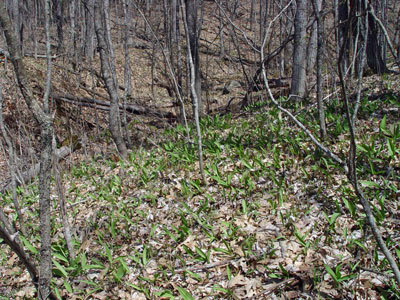DACF Home → Bureaus & Programs → Maine Natural Areas Program → Communities, Plants, and Animals → Rare Plants → Allium tricoccum
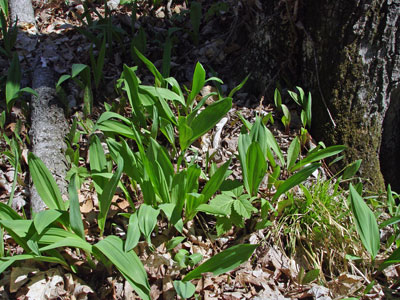
Allium tricoccum Ait.
Wild Leek
- State Rank: S3
- Global Rank: G5
- State Status: Special Concern
Habitat: Rich hardwood forests, usually alluvial. [Hardwood to mixed forest (forest, upland); Forested wetland]
Range: Maine and southeastern Canada west to Minnesota and south to Maryland; further south in the mountains to northern Georgia and Alabama.
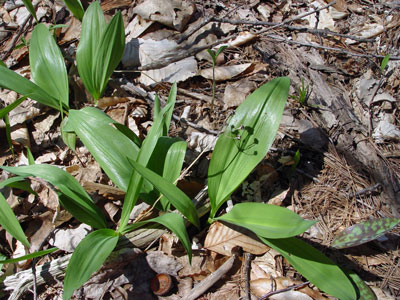
Aids to Identification: A perennial from an onion-like bulb (more slender, however, than a true onion). The leaves arise directly from the bulb, and are long-elliptic, flat, rather fleshy, and shiny green, tapering at the apex to a broad point. They usually measure 10-25 cm long and 2.5-7.0 cm wide. The flowers are on a leafless stalk, forming a spherical umbel. The 6 petals are white, and the fruits are distinctively three-lobed.
Ecological characteristics: Allium tricoccum is a species of rich, usually more southern, bottomland woods, a habitat which is in itself scarce in Maine. Where it does occur, it may be abundant, numbering in the hundreds. Most of the vegetative growth occurs early in the spring, before the overstory leaves appear and block the sunlight, and at this time of year the ground may be thick with Allium tricoccum leaves. Associated plants often include other "rich woods" spring flora: Sanguinaria canadensis, Caulophyllum thalictroides, Dicentra cucullaria, and Claytonia caroliniana.
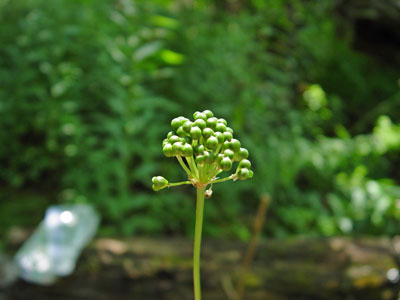
Phenology: Leaves appear in early spring (early to mid May in Maine), and usually wither by the time the flowers appear (late June - July). Flowering scapes and fruits sometimes persist into the next spring.
Family: Alliaceae
Synonyms: Maine is currently tracking this at the species level. Flora Novae Angliae lists two varieties, Allium tricoccum var. burdickii Hanes and Allium tricoccum var. tricoccum. Synonyms include Allium burdickii (Hanes) A. G. Jones; Validallium tricoccum (Ait.) Small.
Known Distribution in Maine: This rare plant has been documented from a total of 38 town(s) in the following county(ies): Aroostook, Cumberland, Franklin, Kennebec, Knox, Oxford, Penobscot, Piscataquis, Somerset, Waldo, York.
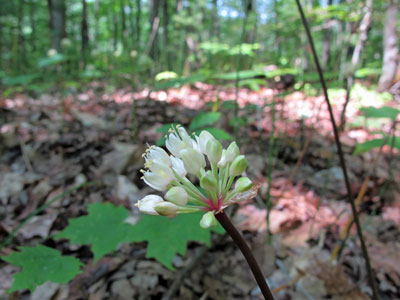
Reason(s) for rarity: At northern limit of its range; suitable habitat scarce.
Conservation considerations: Effects of logging are not well known; partial removal of the canopy would be less likely to adversely affect the plant than would complete removal.
